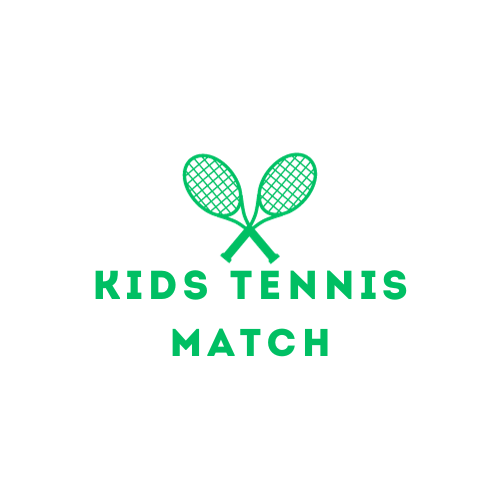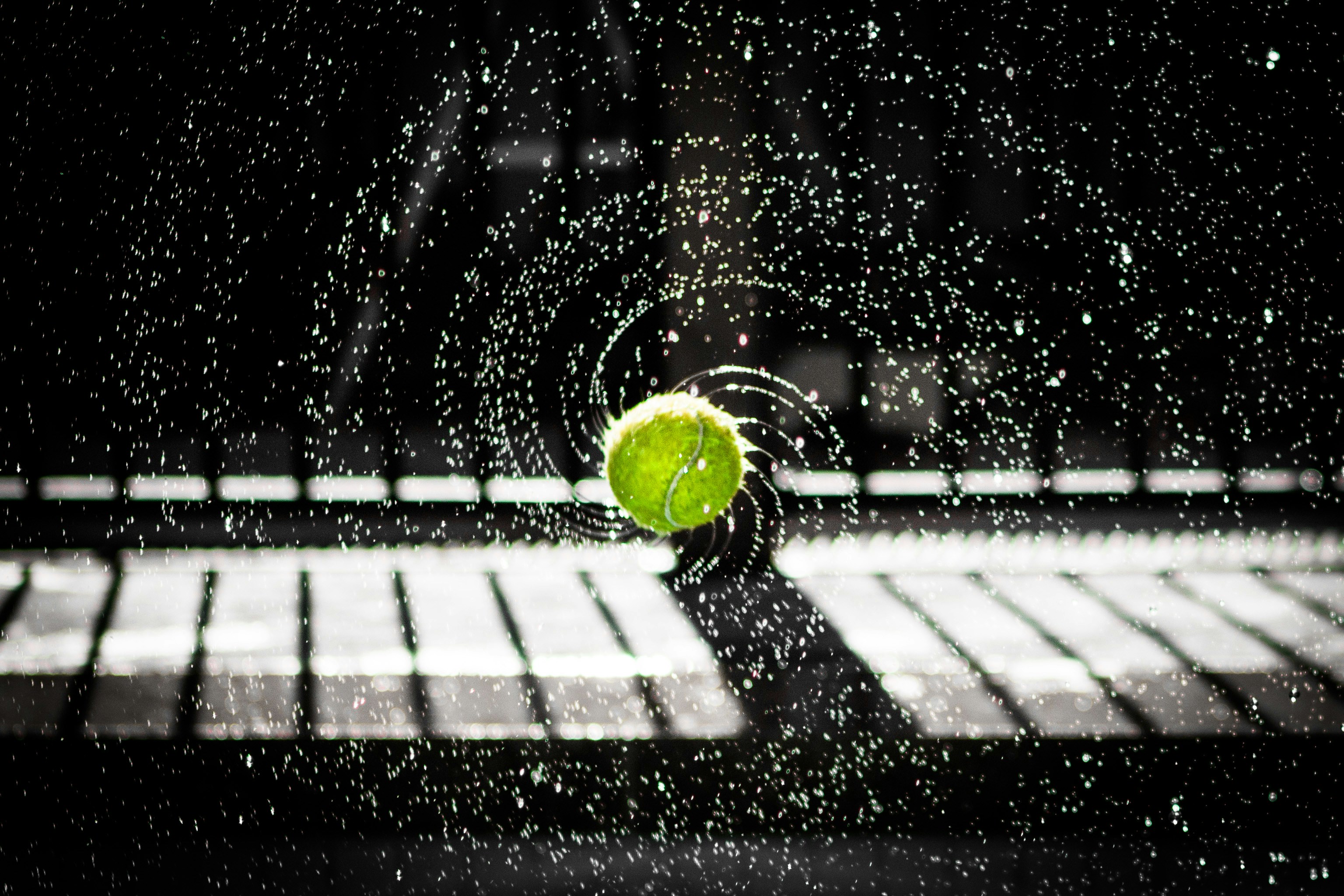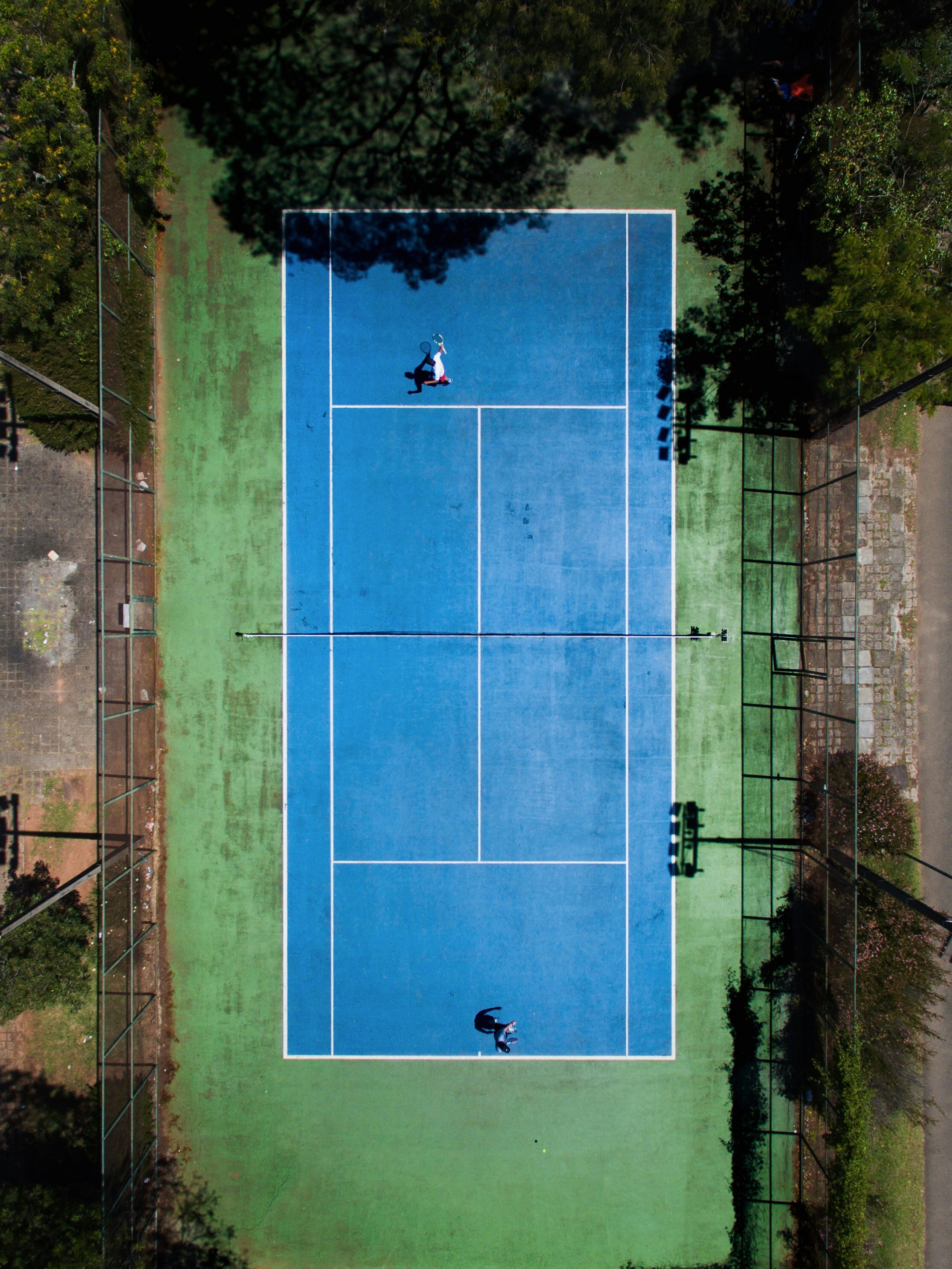Have you ever wondered how long a typical kids’ tennis match should last? Whether your child is just starting out or already seasoned on the court, it’s important to gauge the appropriate duration for their matches. In this article, we will explore the factors that influence match length and provide some practical tips to ensure that your child’s tennis matches are both enjoyable and appropriately timed. So, let’s dive into the world of kids’ tennis and discover the ideal duration for their matches.
Factors Affecting Match Duration
When it comes to determining the duration of a kids’ tennis match, there are several factors that come into play. These factors can vary greatly depending on various aspects such as the age of the players, their skill level, the match format, the court surface, and the weather conditions. Understanding these factors is essential for parents, coaches, and players to create a positive and enjoyable tennis experience for kids.
Age of the Players
The age of the players is a crucial factor in determining the match duration. Younger kids generally have shorter attention spans and less physical endurance compared to older kids. Therefore, it is important to consider age-appropriate match formats and durations to ensure that the matches are engaging, developmentally appropriate, and enjoyable for the players.
Skill Level of the Players
The skill level of the players also plays a significant role in the match duration. Beginners, who are still developing their tennis fundamentals, may require more time to complete a match compared to more advanced players. As players gain experience and improve their skills, they may be able to complete matches in a shorter amount of time. It is important to consider the skill level of the players when determining match durations to ensure a fair and challenging experience for everyone involved.
Match Format
Different match formats have different duration requirements. For kids, there are several match formats that are designed to suit their age and skill level. These include mini tennis, modified full court tennis, and junior tennis formats. Each format has its own set of rules and duration guidelines. It is important for parents and coaches to understand these formats and choose the appropriate one based on the players’ age and skill level.
Court Surface
The court surface can also impact the duration of a tennis match. Grass courts, clay courts, and hard courts each have their own characteristics that can affect gameplay and match duration. Grass courts, for example, are generally faster and may lead to shorter points and quicker matches. On the other hand, clay courts are slower and may result in longer rallies, potentially prolonging match duration. The court surface should be taken into consideration when determining match durations to ensure a fair and balanced playing field.
Weather Conditions
Weather conditions, particularly outdoor matches, can have a significant impact on match duration. Extreme heat or cold temperatures, strong winds, or heavy rain can affect players’ performance and potentially extend or shorten match durations. It is important to prioritize player safety and well-being by considering weather conditions and making necessary adjustments to match durations, such as providing water and rest breaks or rescheduling matches if conditions become unfavorable.
Match Formats for Kids
To cater to the specific needs and abilities of kids, various match formats have been developed. These formats provide age-appropriate guidelines for match durations, ensuring that young players have a positive and engaging experience on the court.
Mini Tennis
Mini tennis is a modified version of tennis played on smaller courts with smaller racquets and lower-compression balls. This format is aimed at kids aged 4-6 and serves as an introduction to the sport. Mini tennis matches typically last for around 10-15 minutes per set, with multiple sets played as a part of a match. The shorter duration allows young children to stay focused and enjoy the game without getting overwhelmed.
Modified Full Court Tennis
As kids progress in age and skill level, they can transition to modified full court tennis. This format is designed for kids aged 7-8 and utilizes full-size tennis courts with slightly modified rules. Match durations for modified full court tennis can vary depending on the players’ abilities and the agreed-upon format, typically lasting between 30-45 minutes.
Junior Tennis
Junior tennis is tailored for kids aged 9-10 and beyond, as they continue to develop their skills and understanding of the game. Match durations for junior tennis can vary considerably depending on factors such as skill level, players’ stamina, and the number of sets played. Typically, matches can range from 1-2 hours, offering more competitive and challenging experiences for young players.
Guidelines for Match Duration
To ensure appropriate match durations for kids of different age groups, certain guidelines can be followed. These guidelines take into account the physiological and psychological development of children, providing a framework for parents and coaches to create a balanced and enjoyable tennis experience.
Age Group 4-6
For kids in the 4-6 age group, match durations should be kept short to maintain their engagement and enjoyment. Aim for matches lasting around 30 minutes, including warm-up and rest breaks. Each set should be limited to 10-15 minutes, ensuring that matches are manageable and promote a positive first experience with tennis.
Age Group 7-8
As kids progress to the 7-8 age group, their physical endurance and attention span increase. Matches can be extended to around 45 minutes, including warm-up, cool-down, and rest breaks. Each set can last between 15-20 minutes, providing opportunities for longer rallies and increased competitive play.
Age Group 9-10
In the 9-10 age group, kids are ready for more challenging tennis experiences. Matches can be extended to 1-1.5 hours, allowing for more competitive gameplay and stamina development. Sets can last between 20-30 minutes, giving players the opportunity to showcase their skills and engage in longer rallies.
Age Group 11-12
For kids aged 11-12, matches can be extended to 1.5-2 hours, providing a more intensive and competitive playing experience. Sets should last between 30-45 minutes, allowing for longer matches and increased skill development.
Age Group 13-14
In the 13-14 age group, match durations can continue to increase to 2-2.5 hours. Sets can last between 45-60 minutes, allowing for more strategic play, longer rallies, and increased physical stamina.
Age Group 15-16
As kids enter the 15-16 age group, match durations can extend to 2.5-3 hours. Sets should range from 60-75 minutes, offering a more challenging and competitive experience as players develop their skills and strategic abilities.
Age Group 17-18
For the final age group of 17-18, match durations can vary depending on the players’ abilities and competitive level. Matches can range from 3-4 hours, with sets lasting 75-90 minutes, allowing for high-level gameplay and the development of advanced skills and tactics.
Training and Practice Recommendations
In addition to understanding match durations, it is essential for young players to engage in appropriate training and practice methods to improve their overall game and prepare for matches.
Building Stamina
To prepare for longer match durations, it is important to focus on building stamina through conditioning exercises and cardiovascular training. Running, interval training, and endurance exercises can significantly improve a young player’s endurance and help them sustain their energy throughout a match.
Working on Technique
Developing proper technique is crucial for efficient and effective gameplay. Regular practice sessions focusing on strokes, footwork, and court positioning can enhance a player’s skill level and reduce errors, ultimately leading to shorter match durations.
Developing Mental Toughness
Mental toughness plays a vital role in a player’s ability to stay focused and perform well under pressure. Engaging in mental training techniques, such as visualization exercises and mindfulness practice, can help young players develop resilience, concentration, and composure during matches, ultimately leading to improved performance and shorter match durations.
Importance of Age-Appropriate Matches
Ensuring that matches are age-appropriate is fundamental in providing a positive and developmentally appropriate tennis experience for kids. Age-appropriate matches offer several benefits and play a significant role in a child’s overall enjoyment and long-term engagement in the sport.
Avoiding Burnout
By introducing kids to matches that align with their age and skill level, the risk of burnout is significantly reduced. Matches that are too long or overly challenging can lead to physical and mental exhaustion, causing kids to lose interest and potentially quit the sport altogether. Age-appropriate matches help prevent burnout by gradually increasing the duration and intensity of matches as kids progress in their development.
Promoting a Positive Experience
Kids thrive in environments that foster positivity and enjoyment. Age-appropriate matches allow young players to experience success, engage in competitive play at an appropriate level, and maintain a positive attitude towards tennis. This positive experience builds confidence, self-esteem, and a lifelong love for the sport.
Encouraging Skill Development
Age-appropriate matches provide the opportunity for players to develop and refine their skills progressively. By gradually increasing the duration and challenge of matches, kids can continuously improve their technique, strategy, and decision-making abilities. This developmental approach leads to shorter match durations as players become more skilled and efficient on the court.
Safety Considerations
It is crucial to prioritize safety when it comes to kids’ tennis matches. Taking appropriate safety precautions can help prevent injuries and ensure a safe and enjoyable playing experience.
Proper Warm-up and Cool-down
Before and after matches, it is essential to engage in a thorough warm-up and cool-down routine. Warm-up exercises should include dynamic stretches and movements to prepare the body for physical activity, while cool-down exercises should focus on gentle stretches and relaxation to aid in recovery and prevent muscle soreness.
Water and Rest Breaks
Hydration and rest are crucial during matches to prevent dehydration and fatigue. Players should be encouraged to take regular water breaks and rest intervals, especially in hot or humid weather conditions. This helps maintain their energy levels and prevents overheating or exhaustion.
Avoiding Overexertion
Pushing kids beyond their physical limits can lead to injury or fatigue. It is important to recognize signs of overexertion, such as excessive fatigue, pain, or decreased performance. Coaches and parents should encourage breaks or modifications to match durations if necessary to prevent overexertion and protect the players’ well-being.
The Role of Parents and Coaches
Parents and coaches play a crucial role in creating a positive and supportive tennis environment for young players. Their involvement and guidance are instrumental in ensuring that match durations are appropriate and beneficial for kids.
Setting Realistic Expectations
Parents and coaches should set realistic expectations for kids’ match durations based on their age, skill level, and physical abilities. Understanding and accepting that progress takes time allows players to enjoy the journey and develop at their own pace, ultimately leading to a positive and successful tennis experience.
Ensuring Proper Rest and Recovery
Rest and recovery are just as important as training and match play. Parents and coaches should emphasize the importance of adequate sleep, rest days, and balanced schedules to allow young players to recharge physically and mentally. Proper rest and recovery contribute to improved performance and reduced match duration.
Providing Emotional Support
Parents and coaches should prioritize the emotional well-being of young players during matches. Offering encouragement, praise, and constructive feedback helps boost confidence and motivation, leading to a positive mindset and reduced match duration. By creating a supportive and nurturing environment, parents and coaches can help kids develop resilience and a love for the sport.
The Impact of Court Surface
The choice of court surface can have a significant impact on match duration and gameplay. Each type of court surface has its own characteristics, which can influence the speed of the game and the duration of matches.
Grass Courts
Grass courts are known for their fast and low-bouncing characteristics. Matches played on grass courts tend to have shorter points and quicker rallies. The ball moves rapidly through the surface, making it challenging for players to recover and extend rallies. As a result, grass court matches often have shorter durations compared to other surfaces.
Clay Courts
Clay courts, on the other hand, are known for their slower pace and high bouncing properties. The ball often slows down upon contact with the clay surface, allowing players more time to react and extend rallies. The slower pace of clay court matches can lead to longer points and rallies, potentially prolonging the overall match duration.
Hard Courts
Hard courts, which are typically made of asphalt or concrete, provide a medium-paced playing surface. Matches on hard courts can vary depending on the specific court type and ball used. Generally, hard court matches are faster than clay court matches but slower than grass court matches. The duration of matches on hard courts tends to fall within a moderate range.
Weather Conditions and Match Duration
Weather conditions, whether matches are played indoors or outdoors, can significantly impact match durations and overall player performance. It is important to take weather conditions into consideration to ensure the safety and well-being of young players.
Indoor Matches
Indoor matches are often not affected by external weather conditions, providing a controlled environment for play. As a result, match durations are typically more predictable and consistent. However, indoor matches can also be influenced by factors such as court temperature and humidity levels. It is important to monitor these conditions to ensure player comfort and maximize performance.
Outdoor Matches
Outdoor matches, particularly those played in extreme weather conditions, require additional considerations. Hot and humid weather can cause players to fatigue more quickly, potentially leading to longer match durations as players need more rest and hydration breaks. Windy conditions can also affect ball flight and player control, potentially influencing match duration and the overall game. It is crucial to prioritize player safety and adjust match durations accordingly in response to weather conditions.
Final Thoughts
Determining the duration of kids’ tennis matches involves considering various factors such as age, skill level, match format, court surface, and weather conditions. Understanding these factors and following the guidelines provided can help parents, coaches, and players create an engaging, safe, and enjoyable tennis experience for young players. It is important to prioritize age-appropriate matches, focus on training and practice techniques, consider safety considerations, provide emotional support, and adapt match durations to account for individual preferences. By doing so, kids can develop their skills, enjoy the game, and foster a lifelong love for tennis.






